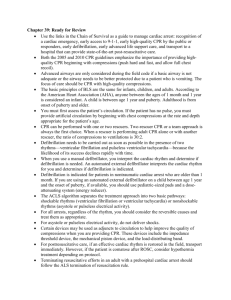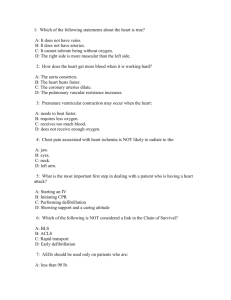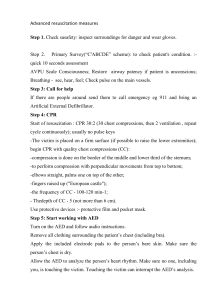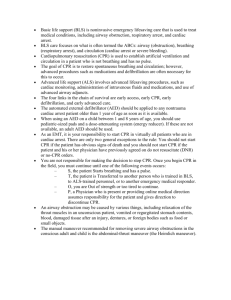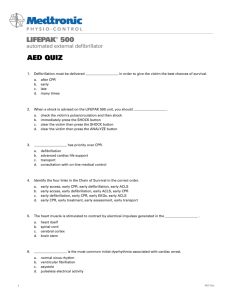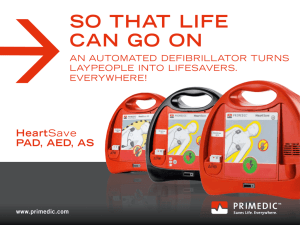IAHF statement on CPR training and Public Access Defibrillation
advertisement
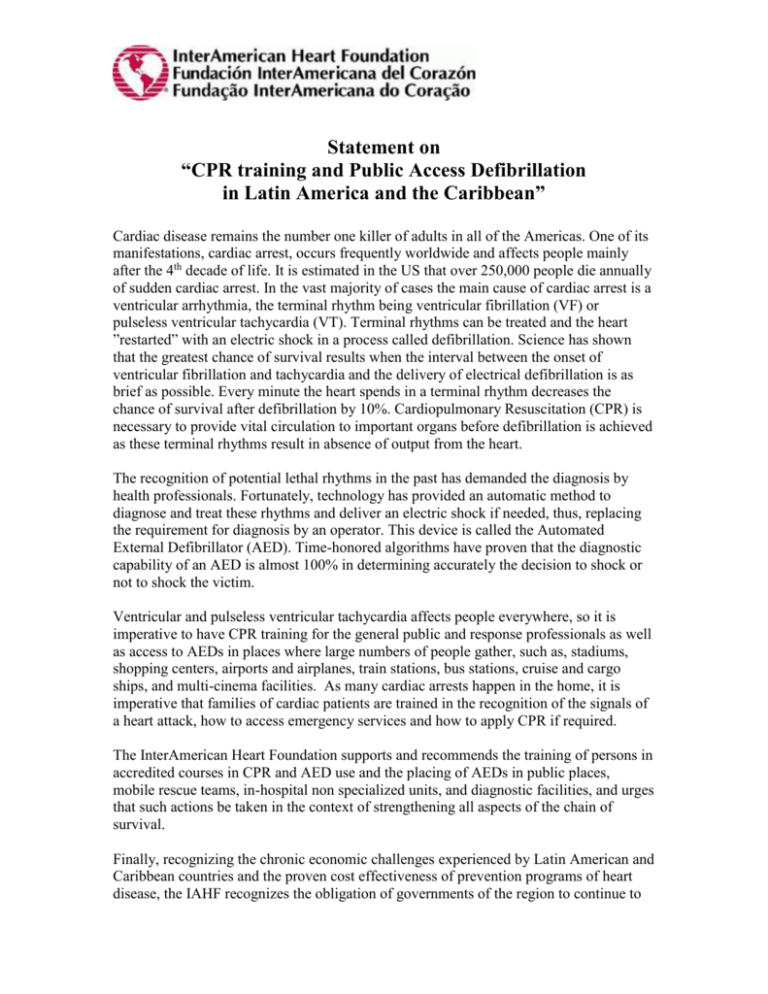
Statement on “CPR training and Public Access Defibrillation in Latin America and the Caribbean” Cardiac disease remains the number one killer of adults in all of the Americas. One of its manifestations, cardiac arrest, occurs frequently worldwide and affects people mainly after the 4th decade of life. It is estimated in the US that over 250,000 people die annually of sudden cardiac arrest. In the vast majority of cases the main cause of cardiac arrest is a ventricular arrhythmia, the terminal rhythm being ventricular fibrillation (VF) or pulseless ventricular tachycardia (VT). Terminal rhythms can be treated and the heart ”restarted” with an electric shock in a process called defibrillation. Science has shown that the greatest chance of survival results when the interval between the onset of ventricular fibrillation and tachycardia and the delivery of electrical defibrillation is as brief as possible. Every minute the heart spends in a terminal rhythm decreases the chance of survival after defibrillation by 10%. Cardiopulmonary Resuscitation (CPR) is necessary to provide vital circulation to important organs before defibrillation is achieved as these terminal rhythms result in absence of output from the heart. The recognition of potential lethal rhythms in the past has demanded the diagnosis by health professionals. Fortunately, technology has provided an automatic method to diagnose and treat these rhythms and deliver an electric shock if needed, thus, replacing the requirement for diagnosis by an operator. This device is called the Automated External Defibrillator (AED). Time-honored algorithms have proven that the diagnostic capability of an AED is almost 100% in determining accurately the decision to shock or not to shock the victim. Ventricular and pulseless ventricular tachycardia affects people everywhere, so it is imperative to have CPR training for the general public and response professionals as well as access to AEDs in places where large numbers of people gather, such as, stadiums, shopping centers, airports and airplanes, train stations, bus stations, cruise and cargo ships, and multi-cinema facilities. As many cardiac arrests happen in the home, it is imperative that families of cardiac patients are trained in the recognition of the signals of a heart attack, how to access emergency services and how to apply CPR if required. The InterAmerican Heart Foundation supports and recommends the training of persons in accredited courses in CPR and AED use and the placing of AEDs in public places, mobile rescue teams, in-hospital non specialized units, and diagnostic facilities, and urges that such actions be taken in the context of strengthening all aspects of the chain of survival. Finally, recognizing the chronic economic challenges experienced by Latin American and Caribbean countries and the proven cost effectiveness of prevention programs of heart disease, the IAHF recognizes the obligation of governments of the region to continue to develop well-balanced investment policies for health resources in which heart disease prevention is made a major priority and CPR training and Public Access Defibrillation made more widely available. More information The InterAmerican Heart Foundation is an organization that brings together all the National Resuscitation Councils of Latin America and the Caribbean and has as its mission to ”to reduce disability and death from cardiovascular and respiratory emergencies and stroke by improving the chain of survival in every community in Latin America and the Caribbean.” For more information or questions, please contact: Dr. Daniel Pichel (Panamá) d.r.pichel@mac.com Dr. Raffo Escalante (Perú) raffo.escalante@gmail.com Dr. Saúl Drajer (Argentina) sdrajer@intramed.net.ar Dr. Santiago de los Santos (Uruguay) sacha@chasque.apc.org Dr. Manoel Fernandes Canesin (Brasil) mcanesin@sercomtel.com.br Note: originally published in 2004, revised 2013.
